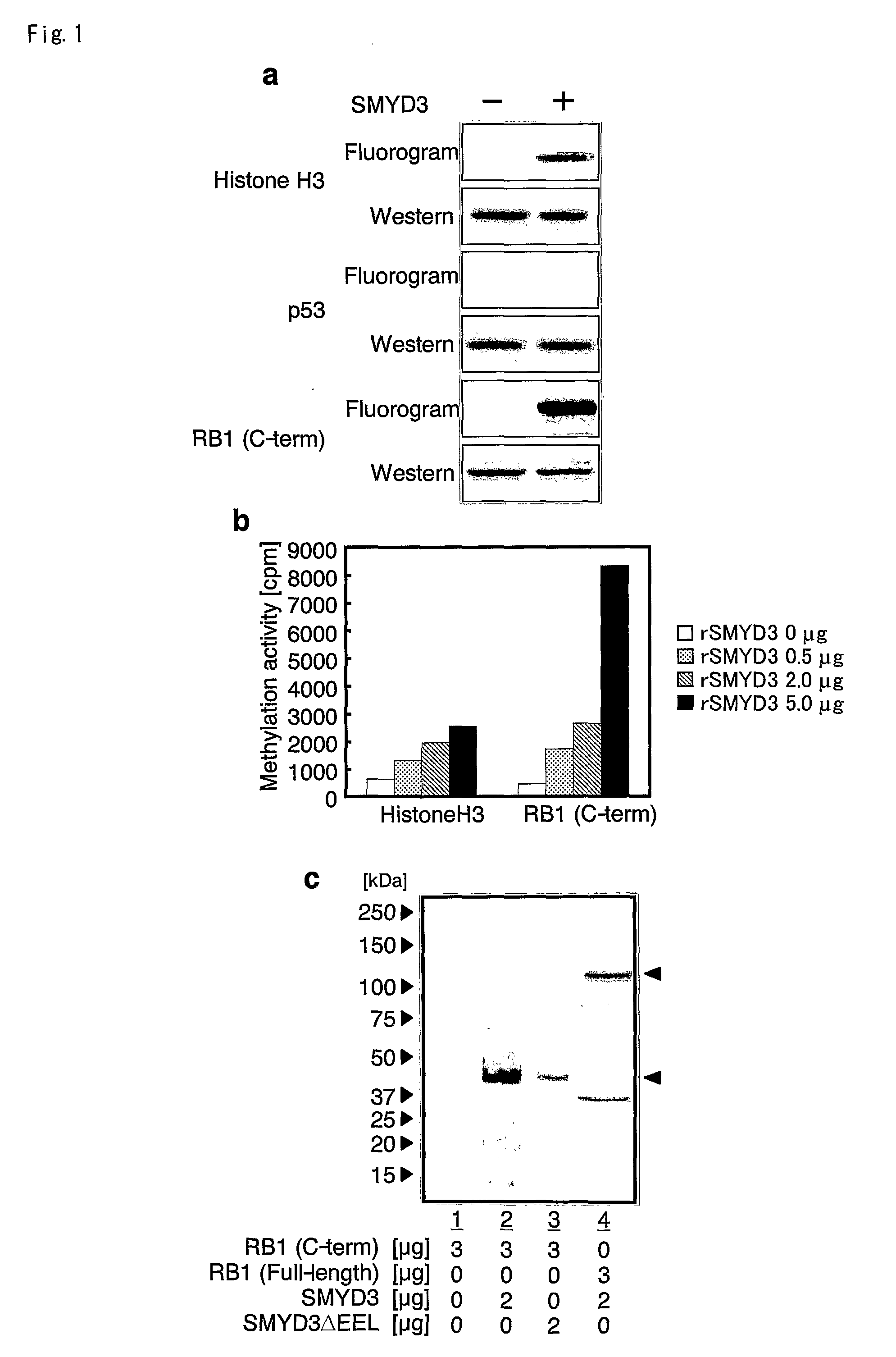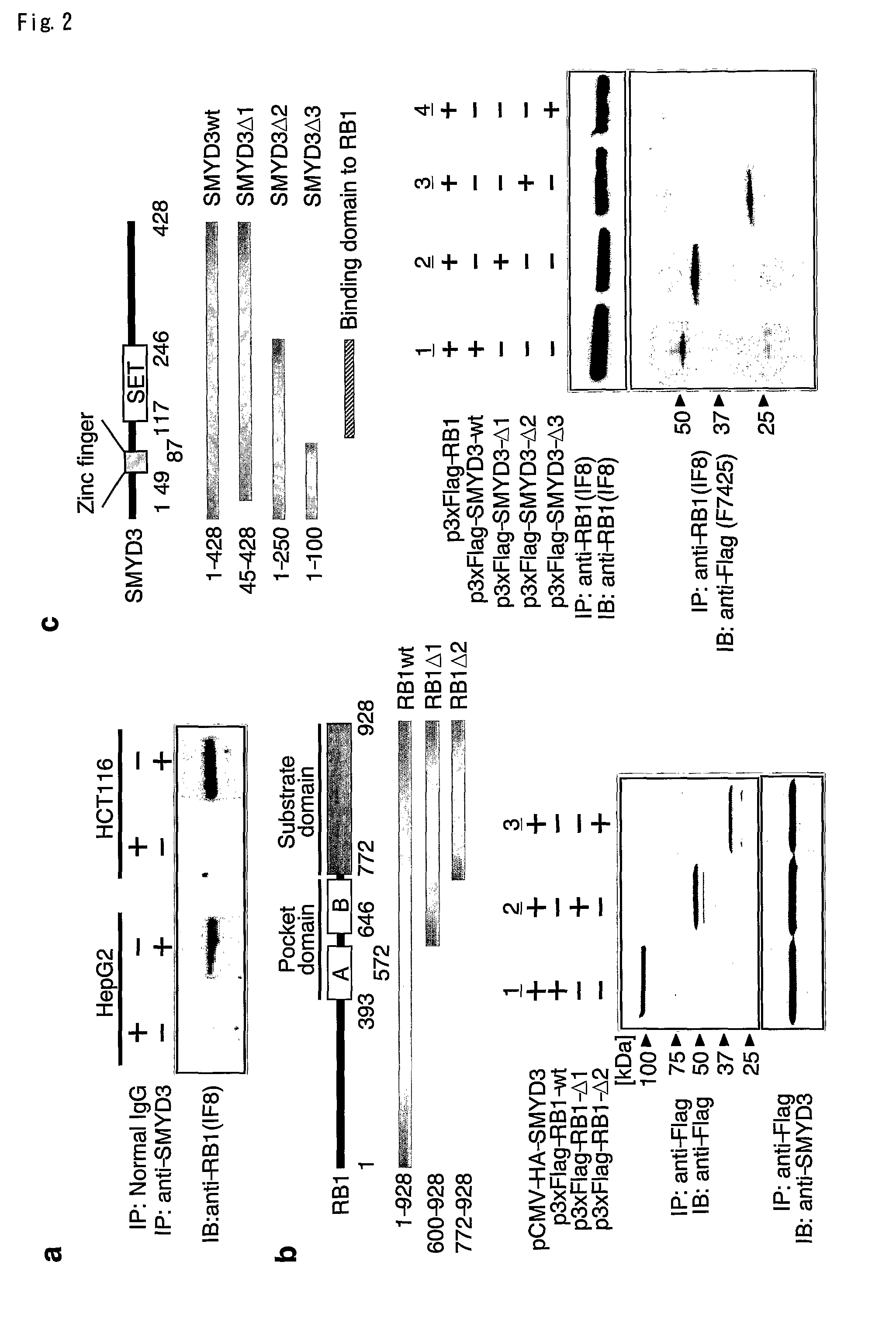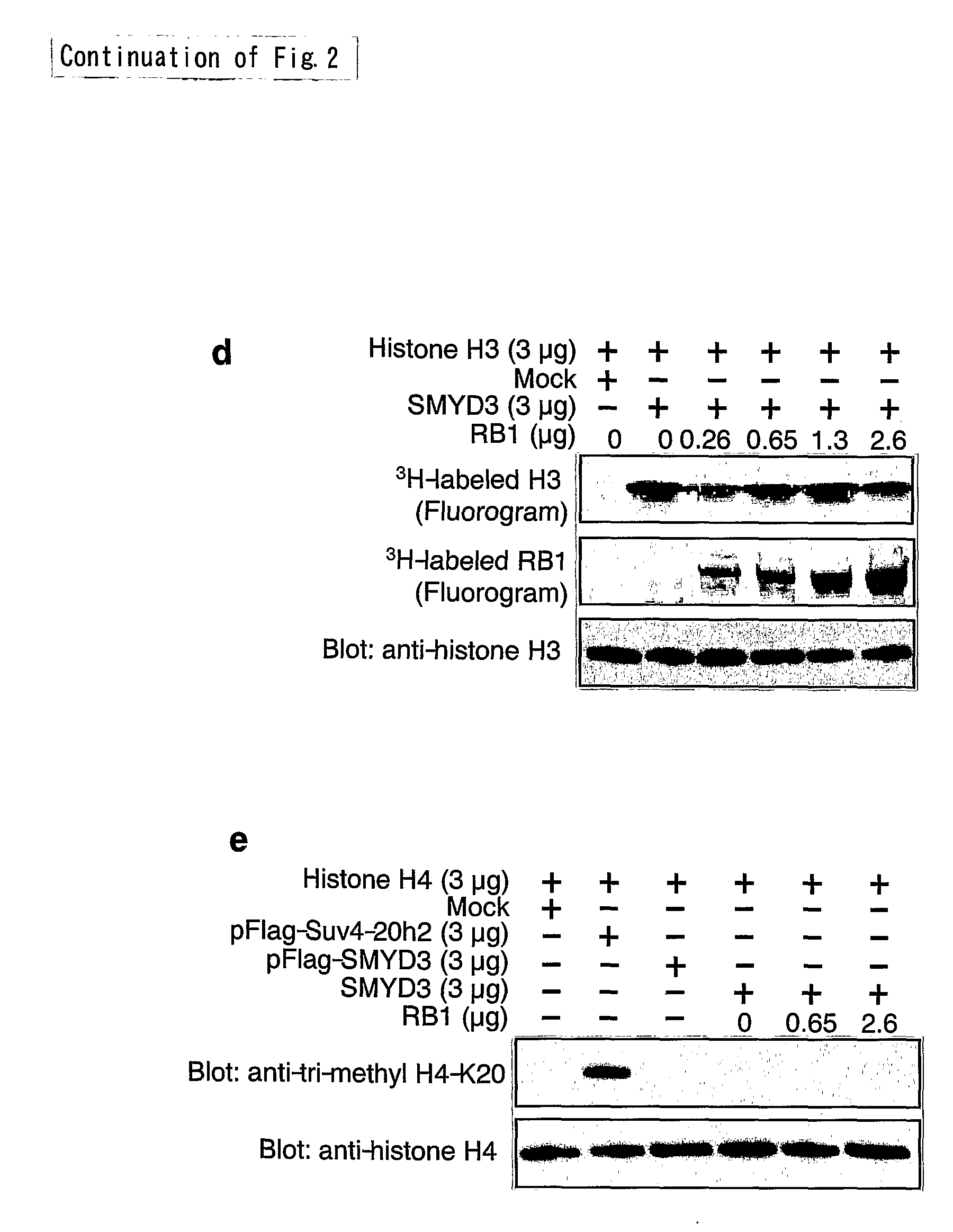Methods of modulating smyd3 for treatment of cancer
a technology of smyd3 and cancer, applied in the field of transcriptional regulation, can solve the problems of unresolved precise mechanism(s) by which smyd3-overexpression results in growth promotion, and achieve the effect of alleviating symptoms and reducing the methylation level of the substra
- Summary
- Abstract
- Description
- Claims
- Application Information
AI Technical Summary
Benefits of technology
Problems solved by technology
Method used
Image
Examples
example 1
RB1 as a Substrate for SMYD3
[0096]Since two recent reports showed that a histone H3-K4 methyltransferase SET7 / 9 catalyzes TAF10 and p53 as a substrates (Chuikov, S. et al., Nature 432, 353-60 (2004)), the present inventors searched for additional substrates for SMYD3 (GenBank Accession NO. AB057595; SEQ ID NO; 1, 2) other than histone H3. Because they are well known regulators of cell cycle progression, p53 and RB1 were first tested (GenBank Accession NO. NM—000321; SEQ ID NO; 3, 4) as candidate substrates. In the course of investigation, recombinant histone H3, wild-type p53, and C-terminal region of RB1 (codons 769-921) were incubated in the presence of 3H-labeled SAM, a methyl donor, together with immunoprecipitated SMYD3 protein from 293T cells. Subsequent PAGE and autoradiography showed bands corresponding methylated histone H3, which is consistent with the finding that SMYD3 methylate histone H3. Interestingly, bands corresponding to methylated RB1 were also detected; however...
example 2
The Methyltransferase Activity of SMYD3 on RB1 Proteins
[0097]To investigate a possible association between SMYD3 and RB1 proteins, proteins extracted from HepG2 or HCT116 cells were immunoprecipitated with anti-SMYD3 antibody. As expected, bands corresponding to RB1 protein were observed by immunoblot analysis with anti-RB1 antibody (FIG. 2a). To determine the region of RB1 responsible for the association, Flag-tagged wild type or mutant RB1 protein were expressed together with an HA-tagged SMYD3 in HEK293 cells, and immunoprecipitation was carried out with an anti-Flag antibody. In line with the methylation of C-terminal RB1 protein, the C-terminal substrate domain (codons 772-928) interacted with SMYD3 (FIG. 2b). To determine the region of SMYD3 responsible for the binding with RB1, plasmids expressing wild type and various forms of mutant SMYD3 were used. Although wild type, and Δ1-(codons 45-428) and Δ2-forms (codons 1-250) of mutant SMYD3 interacted with Flag-tagged RB 1, Δ3-fo...
example 3
Identification of the Methylation Substrate Domain of RB1
[0098]To determine the residue(s) responsible for the methylation of the substrate domain of RB1, conserved amino acid sequences in the substrates of SET7 / 9 methyltransferases were compared. Since the methylated lysines were preceded by either serine or threonine, the present inventors focused on lysine 824, lysine 889, and lysine 896 as candidates. Recombinant proteins, of wild type and three forms of mutant substrate domain of RB1, were prepared (FIG. 3a). Compared to the wild type protein, the K889A and K896A mutants were methylated at similar levels by SMYD3 (FIG. 3b, c); however, methylation of K824A was significantly decreased (FIG. 3b, c). Additionally, because replacement of K824A did not completely diminish methylation of RB1 protein, the methylation of lysine 791 and lysine 814, both of which are preceded by tyrosine, were examined. Two mutant RB1 proteins, K791A and K814A, showed similar levels of methylation to wil...
PUM
| Property | Measurement | Unit |
|---|---|---|
| temperature | aaaaa | aaaaa |
| temperature | aaaaa | aaaaa |
| weight | aaaaa | aaaaa |
Abstract
Description
Claims
Application Information
 Login to View More
Login to View More - R&D
- Intellectual Property
- Life Sciences
- Materials
- Tech Scout
- Unparalleled Data Quality
- Higher Quality Content
- 60% Fewer Hallucinations
Browse by: Latest US Patents, China's latest patents, Technical Efficacy Thesaurus, Application Domain, Technology Topic, Popular Technical Reports.
© 2025 PatSnap. All rights reserved.Legal|Privacy policy|Modern Slavery Act Transparency Statement|Sitemap|About US| Contact US: help@patsnap.com



